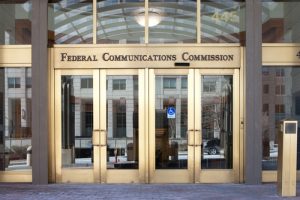
U.S. Sen. Shelley Moore Capito (R-WV) requested the Federal Communications Commission (FCC) bolster its efforts to ensure accuracy of the National Broadband Map, a searchable and interactive website that allows users to view broadband availability across every neighborhood in the United States.
Specifically, Sen. Capito urged that the FCC utilize consumer-reported data to ensure maps do not overstate coverage, thereby increasing the accuracy of the commission’s mobile coverage maps.
“As co-chair of the Senate Broadband Caucus, I recently wrote a letter urging the Federal Communications Commission to improve the accuracy of the National Broadband Map by using consumer-reported data,” Sen. Capito posted on Facebook on Sept. 21. “Another way we can help close the #digitaldivide.”
Joined by her colleague U.S. Sen. Amy Klobuchar (D-MN), also co-chair of the Senate Broadband Caucus, Sen. Capito sent the September letter to FCC Chairman Ajit Pai noting that as federal legislators work to close the digital divide, “it is critical that we understand where broadband is available and where it is not,” the senators wrote.
“While the FCC is limited in its ability to verify nationwide mobile coverage at the local level, consumers can provide valuable feedback about the actual availability and strength of service in their own communities,” the senators wrote, according to a Sept. 21 statement released by Sen. Capito’s office. “Consumers — as well as state and municipal agencies — can be our eyes and ears on the ground. As we work on improving the accuracy of our coverage maps, we encourage the FCC to consider this as one method to produce the most accurate maps possible.”
The lawmakers also said in their letter that the broadband coverage information currently being collected by the FCC isn’t detailed enough “to provide an accurate picture of conditions at the local level, especially in rural areas.”
And the senators noted that without better data collection, the maps will continue to submit incorrect information on service availability in unserved or underserved areas.
“Too many consumers have experienced the frustration of seeing an area covered on a map only to find out no service or extremely limited coverage is available on the ground,” the senators wrote, according to Capito’s statement. “When coverage maps overstate service, it is often rural consumers that pay the price.”
They suggested the FCC use its Speed Test App, which permits consumers to take more refined measurements of service quality in particular areas.
According to the government’s National Broadband Map website, the current data displayed on site “are as of June 30, 2014 and are no longer being updated.”
The commission sought funding for fiscal year 2016 to maintain and update the National Broadband Map, but the request wasn’t granted, according to the site, which also says that while the FCC currently isn’t in a position to update the map in light of its funding constraints, the commission “continues to collect and report on deployment through its semi-annual data collection and annual Broadband Progress Report.



